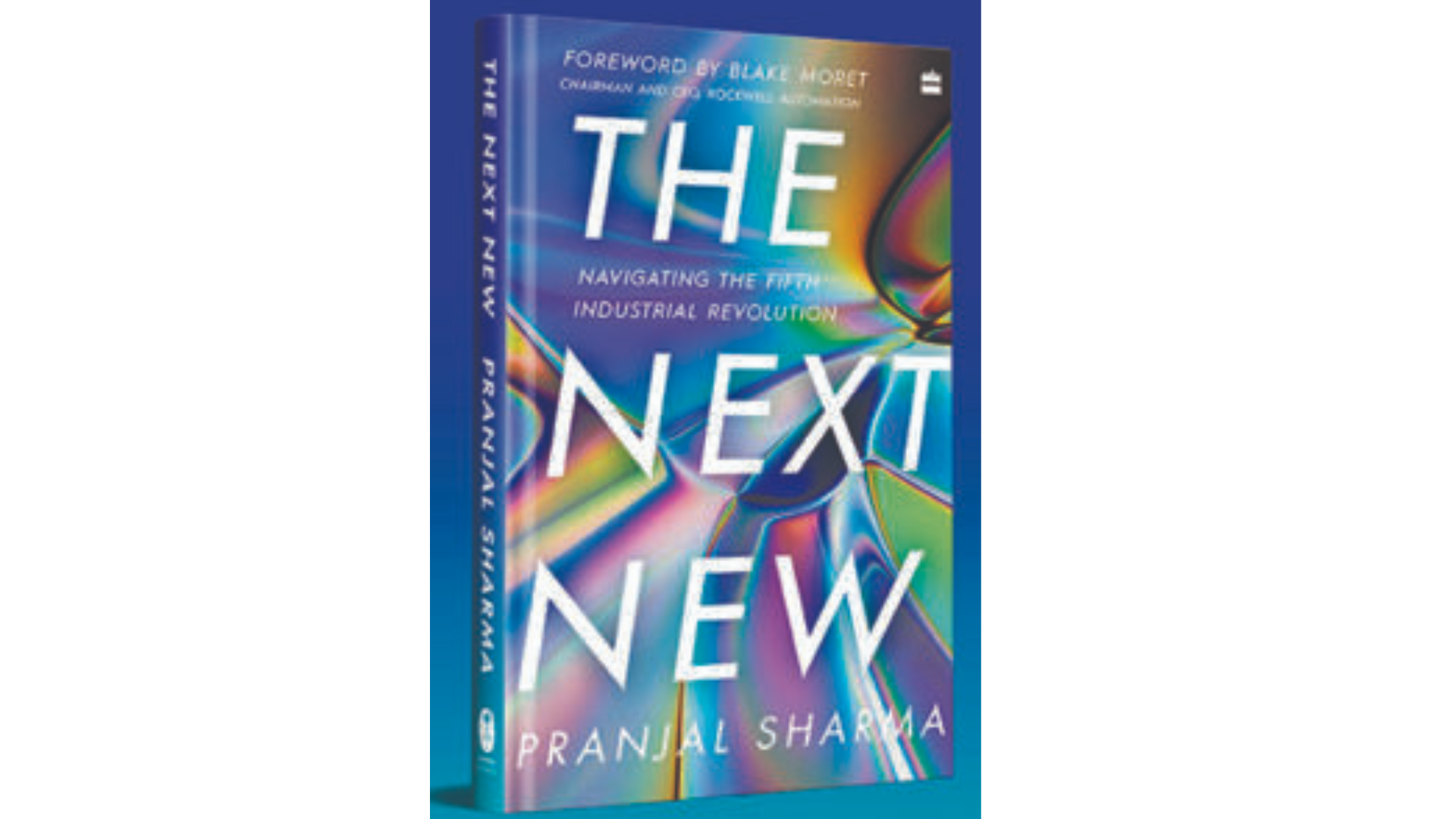In his ‘The Next New’, Pranjal Sharma warns that the rise of technologies like artificial intelligence, process automation and unmanned vehicles should not be at a human cost.
Pranjal Sharma, a journalist, economic analyst, adviser to several international organizations, and technology expert, offers an insightful view in his new book, “The Next New,” on the ongoing disruptive technologies that mark the advent of the fifth industrial revolution led by exponential digital transformation.
The book represents a well-reasoned journey, divided into nine chapters, plus a prologue and an epilogue, exploring the new technologies and innovations that are either in development or have already been developed. These elements collectively contribute to defining the emerging fifth industrial revolution, which is the central topic of the book. As Sharma writes in the prologue: “The fifth industrial revolution improves upon the fourth. It is more caring. The additional objectives are sustainability, governance and social impact.”
The book also includes a preface by Blake Moret, the CEO of Rockwell Automation, and an introduction edited by Aashish Mehra, the Chief Research Officer of MarketsandMarkets.
The leitmotif of the book can be summarized in the author’s phrase, which echoes the thoughts of the philosopher Heraclitus: “nothing is permanent but change.” In this context of rapid change, Sharma reaffirms the main thesis of Schumpeter’s “Capitalism, Socialism, and Democracy”: “creative destruction is the key to survival”. Thus, only those who are prepared for the changes will thrive.
The technologies and innovations examined by Pranjal Sharma, related to the fifth industrial revolution, are profoundly transforming or will transform entire industries, organizations, business models, consumption patterns, and, therefore, the lives of people around the world. In addition, these technologies of The Next New will be shaped by ESG values and SDGs objectives.
In his detailed analysis of new technologies, the author primarily focuses on the supply side, assessing the ability of researchers and companies to develop innovative solutions based on sustainability that are applicable across various sectors. These sectors range from the environment to agriculture and food safety, manufacturing, green digital energy, and health. Furthermore, Sharma shows that most of the technologies needed to facilitate a zero-emissions transition are already available, and more will be available soon. He also identifies the top five new technologies “that will impact businesses and even our personal lives over the next few months. These are broadly immersive technologies and the metaverse, non-fungible token (NFT)/tokenization and decentralized identity, DNA-based digital twin, decision intelligence, generative artificial intelligence, and satellite communications.”
Of course, not all the items on the extensive list of potential disruptive technologies provided by the book’s author will succeed and be adopted on a large scale. Some will, while others will remain possibilities due to a lack of appropriate implementation or simply because they are not convenient or do not find customers interested in them. However, many of them will become a reality and change entire industries and markets. The rapid evolution of these new technologies almost always fuels their growth, as well as that of the related markets.
Sharma warns that the rise of technologies like artificial intelligence, process automation and unmanned vehicles should not be at a human cost. Nor should it be at the cost of the planet. This warning is important because the positive effects of technological progress are not something to be taken for granted; rather, they depend, above all, on policy directions, the governance of new technologies, and the ability to shift policies at the same pace as the changes in technologies. In this regard, the author recalls that “business rules are being redefined by ethics-and values
If, on the one hand, we must look with confidence at the smart and breakthrough technological advances that the fifth industrial revolution brings, on the other hand, we cannot adopt a fideistic attitude and believe that technological advances are necessarily built with guardrails to prevent damage while maximizing the benefits for industry and society. This is why transparency, sustainability, accountability and the role of institutions are important.
Indeed, a positive aspect of the fifth industrial revolution, according to The Next New’s author, is that it appears to involve deeper public-private collaborations. Consequently, global companies are committing to contribute to global public programs that support social inclusion.
As mentioned previously, to find solutions to the challenges of environmental and social sustainability, Sharma looks, above all, to the supply side and, therefore, to the technologies and innovations that researchers and businesses can implement, with a focus on efficiency and profitability. However, it is also important to highlight the relevance of the demand side—i.e., the needs that consumers want to satisfy. These needs must necessarily become increasingly compatible with the requirements of environmental and social sustainability in the coming years. Therefore, technological advances must also be evaluated and implemented within the scope of these mandatory needs. This is because the interests of various stakeholders do not always converge.
In conclusion, this inspiring and insightful book reminds us of how important technological change is in our lives and how many benefits can derive from innovations. The technological side, however important, is not the major one. According to Sharma, the biggest disruptor of the fifth industrial revolution “would be the need for making societies safer, more productive, and less harmful to the environment.” Within this view, tackling possible harm created by digital activity needs to become a priority for governments worldwide.

Daniele Schilirò is Professor of Economics at University of Messina, Italy.

